Time for the monthly edition of “Staff Inflection” where the writing staff sounds off. This time it’s a little less frothy than usual:
What myth about motorcycling – either believed by some riders or by the public in general – bugs you the most and why?
Steve Smith
There have to be a dozen or more motorcycle myths circulating the globe. Each seem ridiculous when science and logic is applied to the claims made.
A few of the more common examples are “Full face helmets restrict visibility,” “Lay it down if you are going to crash” and, of course. “Loud pipes saves lives.” I’ll leave those for the others to write about. I want to focus on the “Don’t use the front brake” myth.
Just like automobiles, the front brakes of motorcycles are designed to provide 70 percent or more of the total braking power. Not using them reduces braking effectiveness dramatically.
As brakes are applied, weight is shifted forward and there is more force applied to the front wheel and less on the rear. This translates to less available traction in the rear, making it easier to lock up the rear wheel when more rear braking pressure is applied to get the bike to stop.
Rear wheel lock-up leads to loss of steering control and the bike will track in a straight line from the point of lock-up. A front brake lock-up can also lead to problems, but this should not happen if riders learn to use the brakes properly and apply both simultaneous without locking either wheel.
Bob Rosen
Like most myths, those associated with motorcycling are long-held beliefs by at least some cyclists that are not entirely based on provable facts. In fact, it’s reasonable to say that “fake news” is probably responsible for some of the myths that get repeatedly cited as gospel. Somewhere in the dim mists of long-ago, an idea was proffered that was created to support a notion to which someone had a strong emotional attachment. Repeated often enough, the idea takes on a life of its own and gains credibility over time. A myth is born.
On my personal list of motorcycle myths, quite a few seem to be related to safety and/or freedom. Unraveling the fact from the fiction can be tricky and not always definitive. Take for instance one of my favorites: “Loud pipes save lives.”
Reaction to this one falls pretty much in line with how our country looks at lots of issues these days. That is, there isn’t much middle ground – either you believe it or you don’t. Do some research on this and you’ll find strident support for either side of the argument. Of course, the whole thing is fraught with shades of gray and variability that makes coming to a final conclusion less than absolute. There’s the question of “How loud is loud?”
Also, I’ve read numerous explanations from the Loud Crowd that explains how valuable it is to identify a threat, pull in the clutch, rev the motor aggressively, and then wait for the appropriate reaction from the offending vehicle.
Or how about the firmly held belief that loud pipes create a zone of safety around ones bike that keeps danger at bay?
On the other side of the argument are those who cite the lack of objective evidence to support loud pipes. It’s pretty much a matter of opinion, and that depends on which side of the issue you find yourself.
If the main objective of having loud pipes is to keep riders safe from offending cars and trucks, then I would prefer to look at more effective ways of getting that done. How about rider training to enable riders to do a better job of predicting and avoiding danger?
How about bikes that are capable of quick evasive maneuvers and/or effective braking? In my view, being directly in charge of your own safety is far superior than relying on a passive approach like making lots of noise to keep threats away.
Of course, other than the “safety” provided by loud pipes, there’s the tribal element as well. Most riders are tribal to one degree or another. In the case of loud pipes, there are definitely kindred spirits out there that that just like the idea of loud pipes to enhance their riding experience.
Some say it’s exercising their “rights” and experiencing the ultimate freedom of motorcycling.
Whichever side of this issue you’re on, you’ll have plenty of company – just like the current state of our politics.
Victoria Zandonella
The myth “Motorcycling is a man’s sport” has always perturbed me.
Riding since I was 10 years old, I never understood why females were made to feel the sport was off-limits to us XX chromosome carriers. As soon as I began riding, it was my life’s foremost passion. Societal norms seemed to push the theory that jumping on a motorcycle was not ladylike, etc. I was a rare breed back in those days for sure.
Fast forward 40 years from my start in the sport, I’m very happy to see that my fellow ladies are jumping on the bandwagon. WRN (Women Riders Now) Magazine recently showcased a 2014 Motorcycle Industry Council study which determined the estimated number of motorcycles owned by females was up to 14 percent. That represented a 50 percent increase from the prior 10 years.
I can only imagine the percentage of female riders is well north of that number today. There are also many additional women, not included in this statistic, who enjoy the sport as pillion riders.
Here in Connecticut, on average, 20 percent of CONREP enrollees are female, which is a very encouraging statistic that I would imagine is also representative of the average across the U.S.
What really excites me personally is the increased presence of female off-road/dual-sport/adventure riders of recent. Each year I see more ladies taking to the dirt. Female rider forums and online publications have cropped up on the web and readership is growing.
Women may very well be the key in saving the motorcycle industry from the steady decline/demise it has suffered over the last few decades as much of the riding population ages out of the sport.
It’s high time for manufacturers to understand the power that women represent in this industry and tailor their motorcycles and marketing towards this ever growing population.
Paul Siciliano
The myth that perturbs me the most is “I had to lay it down to save it.”
This is total nonsense as well as a prescription for disaster. It bugs me because I have heard many older riders who are thought to be very knowledgeable about riding preach this to new impressionable riders.
We all know it can be a delicate subject to discuss proper riding habits with some veteran riders, but I will never walk by this discussion if I hear it being preached. When riding a motorcycle, you are always in a better position for safety when you “act” as opposed to “reacting.”
For example, a sizable percentage of motorcycle accidents that take place in a curve involve no one other than that single rider. Most often it is due to excessive speed and the rider operating outside their skill level. The result being not able to negotiate the curve at their entry speed.
The reaction to having too great of an entry speed can be unpredictable and result in a downed rider. Should I coach a rider to lay their bike down when they go to fast into a curve?
That type of thinking is as far away from safe instruction as I can imagine. Teaching a rider to act responsibly and within their skill-set is much more realistic. “Acting” carefully on a motorcycle by changing your approach speed to a good entry speed – using good risk offset – is how a rider should be thinking. Programing a mantra in a rider’s mind to “lay it down to save it” is the exact opposite of proper teaching.
Bob Furman (aka “Arlo Mudgett”)
My myth: “Motorcycles corner better than cars.”
This commonly held belief has always bothered me. As motorcycling myths go, I’ve always felt that the “cornering on rails” myth was particularly dangerous for  novice riders. A very graphic example was an incident where a complete motorcycling neophyte “test rode” a sport bike in Charlestown, NH. He managed to ride the bike over the Connecticut River into Springfield, VT. On his return trip he “opened her up” going into a gradual corner. The excessive speed caused him to go wide at the apex, where he crossed into the oncoming lane, hitting a delivery van head-on. The emergency crews were still cleaning up the site when I happened by, noticing the now deceased rider’s sneakers lying askew in the middle of the street.
novice riders. A very graphic example was an incident where a complete motorcycling neophyte “test rode” a sport bike in Charlestown, NH. He managed to ride the bike over the Connecticut River into Springfield, VT. On his return trip he “opened her up” going into a gradual corner. The excessive speed caused him to go wide at the apex, where he crossed into the oncoming lane, hitting a delivery van head-on. The emergency crews were still cleaning up the site when I happened by, noticing the now deceased rider’s sneakers lying askew in the middle of the street.
The science is pretty simple. Four rubber contact patches, each with a larger number of square inches, out-corners two smaller tire contact patches. I recall that one of the major car magazines tested this and proved the theory correct. The power-to-weight ratio tends to favor the motorcycle in a straight line, while the automobiles four tires give it an advantage in the corners. To think otherwise may cause you to lose your sneakers, along with your life.
Bud Wilkinson
Being last is sort of like being at the tail end of the buffet line. All of the good items have been taken.
But being last also enables me to forcefully reiterate what’s already been said. Loud pipes do not saves lives because by the time someone hears you, the bad act has most likely already been committed.
All loud pipes do is piss people off, and give all riders a bad name. There’s no need to disturb the peace and quiet of others. Want to be safer while riding? Take a rider education course to improve your skills. This is true no matter how many years you’ve been riding.
Another helpful measure is to be visible, with additional lighting on your bike or bright, reflective gear. A state cop once told me to always ride in daytime with your high beam on.
I’m particularly aware of loud pipes these days because my new-to-me bike has after market pipes that can rattle windows if the throttle is blipped. Ear plugs and careful throttle management reduce the din, but the pipes are still annoying. I get the feeling that for every one driver who may be alerted to my presence, there are 20 others that are just annoyed.
Loud pipes are just rude.
 Ride CT & Ride New England Serving New England, NYC and The Hudson Valley!
Ride CT & Ride New England Serving New England, NYC and The Hudson Valley!
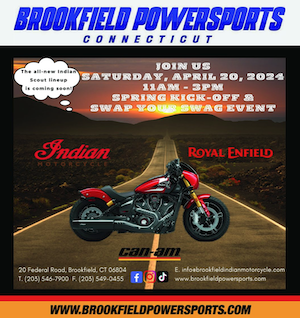

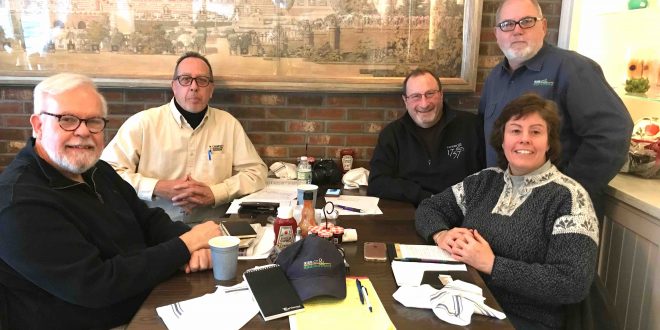
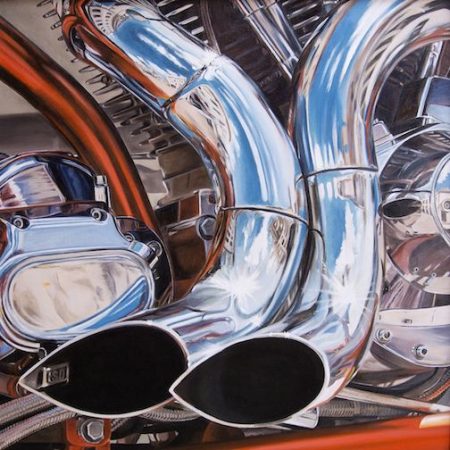
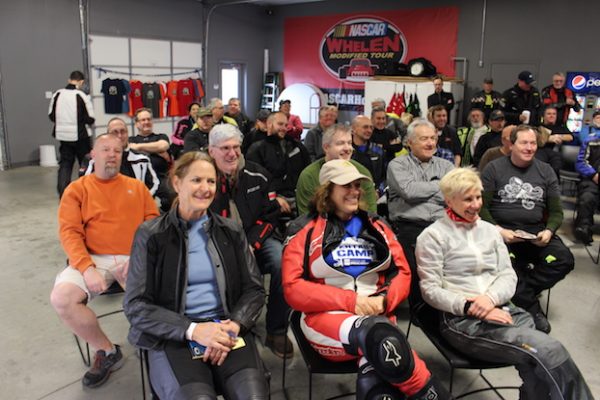
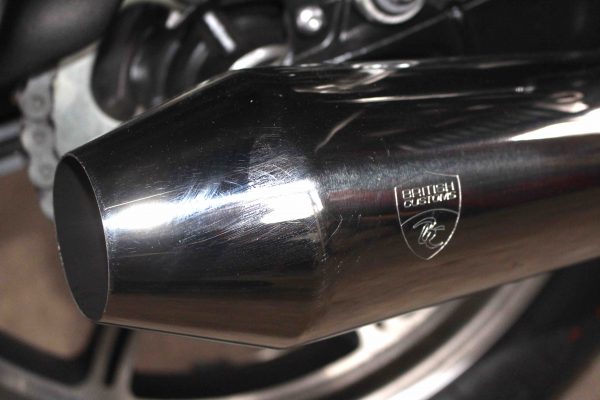

I leave them on because I’m an callous idiot. Seriously, a friend gave me some stock pipes to replace the aftermarket silencers but they didn’t fit. Buying OEM pipes isn’t in the budget at the moment, so I’m wearing ears plugs and trying to be careful with the throttle so as not to bother folks… I’m also mindful of the high beams. I dim them when there are vehicles in front of me. Hadn’t thought of the idea that high beams might take attention away from turn signals. Thanks.
Having said that, Bud, why do you leave them on? Also a high beam on all the time may obscure your turn signals if they are close to your headlight.